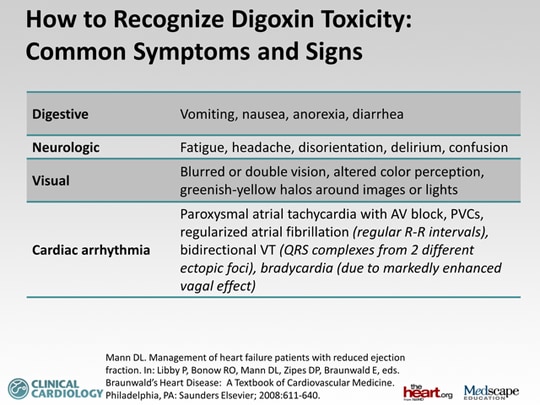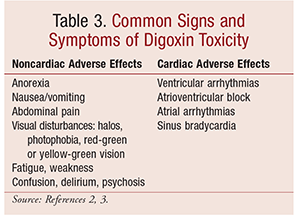


Studies with pharmacokinetic data showed that free digoxin concentration fell to almost zero within a few minutes following the administration of digoxin-Fab.

The time for reversal of digoxin toxicity is reported to be 30–45 min. In three large case series of 430 acute and 1308 chronic poisonings, response rates to digoxin-Fab vary from 80–90% to 50%. Ten case series with a total of 2,080 patients have reported on the use of digoxin-Fab in digoxin poisoning. There were no randomised clinical trials examining the use of digoxin-Fab for acute or chronic digoxin poisonings. Efficacy and effectiveness of digoxin-Fab. The half-lives of both digoxin and digoxin-Fab are prolonged in renal failure to over 100 h. Digoxin-Fab has a mean plasma half-life of 19–30 h and a Vd of 0.4 L/kg. A 40-mg vial of digoxin-Fab (DigiFab) binds 0.5 mg digoxin. Digoxin has 60–80% bioavailability, a mean plasma half-life of 40 h and a volume of distribution (Vd) of 5–10 L/kg and low protein binding (20%). Digoxin acts via inhibition of Na +/K + ATPase. Pharmacology and kinetics of digoxin and digoxin-Fab. Pubmed, Embase, Medline and Cochrane were searched from 1946 to May 2013 using the terms digoxin, digoxin-specific Fab, and digoxin antibody. To review the pharmacology, efficacy, effectiveness, indications, safety and the dosage of digoxin-specific antibody fragments. Calculated equimolar doses of digoxin-Fab are high, very expensive, and infrequently used. Digoxin-specific antibody fragments (digoxin-Fab) are widely regarded as a safe and effective treatment for the management of acute and chronic digoxin poisoning.


 0 kommentar(er)
0 kommentar(er)
